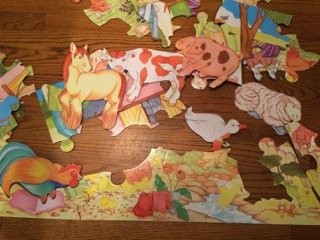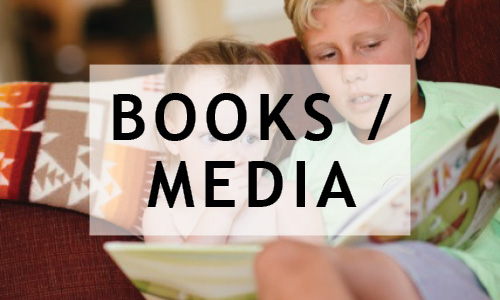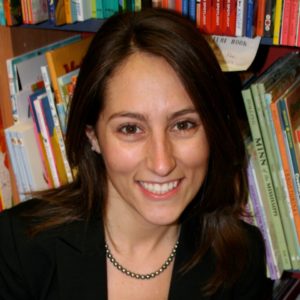 Parents don’t typically consider a puzzle to be a language learning toy. Sure, it’s great to build fine motor, and spacial relationship skills but how does language fit in? When parents join the play, it ups the level of learning as long as we stay in the passenger’s seat and let our child drive the play.
Parents don’t typically consider a puzzle to be a language learning toy. Sure, it’s great to build fine motor, and spacial relationship skills but how does language fit in? When parents join the play, it ups the level of learning as long as we stay in the passenger’s seat and let our child drive the play.
My 4-year old friend brought out his favorite Galt giant floor puzzles, “The Farm” and “Dinosaurs.” Let’s look at the farm. I sat down on the floor next to him and started the conversation. Soon he was leading and asking me the questions. So how can we strengthen language skills while playing with a puzzle?
- Asking questions. I started out with, “Where is the rest of the roof of the chicken coop?” or “Where are the purple stripes?” He joined in with “Can I have the tractor?” when we had assembled the pieces around the shape of the missing tractor. “Where are the rest of the bales of hay?” as we looked to see what might be continued on the missing puzzle piece.
- Building vocabulary. After we finished our farm puzzle, my friend started to take out the animals one by one, “Wanna see this one?” and had me name them. Then he chimed in with the associated sound the animal makes, “bak bak bak” for the chicken and “neigh” for the horse. While assembling, I am talking about the pasture, silo, chicken coop or clay flower pot.
- Describing. I like to describe what I am looking for. I need the front part of the pig, an animal with orange spots, the scarecrow’s body or the wooden doors of the barn. Kids start to follow that model and describe what piece they are searching for too so there is some nice chatter as they assemble their puzzle.
- Relating the objects and theme to life experiences. Start by talking about how the pictures related to your recent experience or something you might have done together like visiting a petting farm, seeing a cow, or maybe just growing a plant. As kids enter school they are asked to relate “books to life,” meaning tell what they have seen or experienced that matches a character, object or event in the story. These connections build language skills as children start weaving their world together and explaining the connections.



